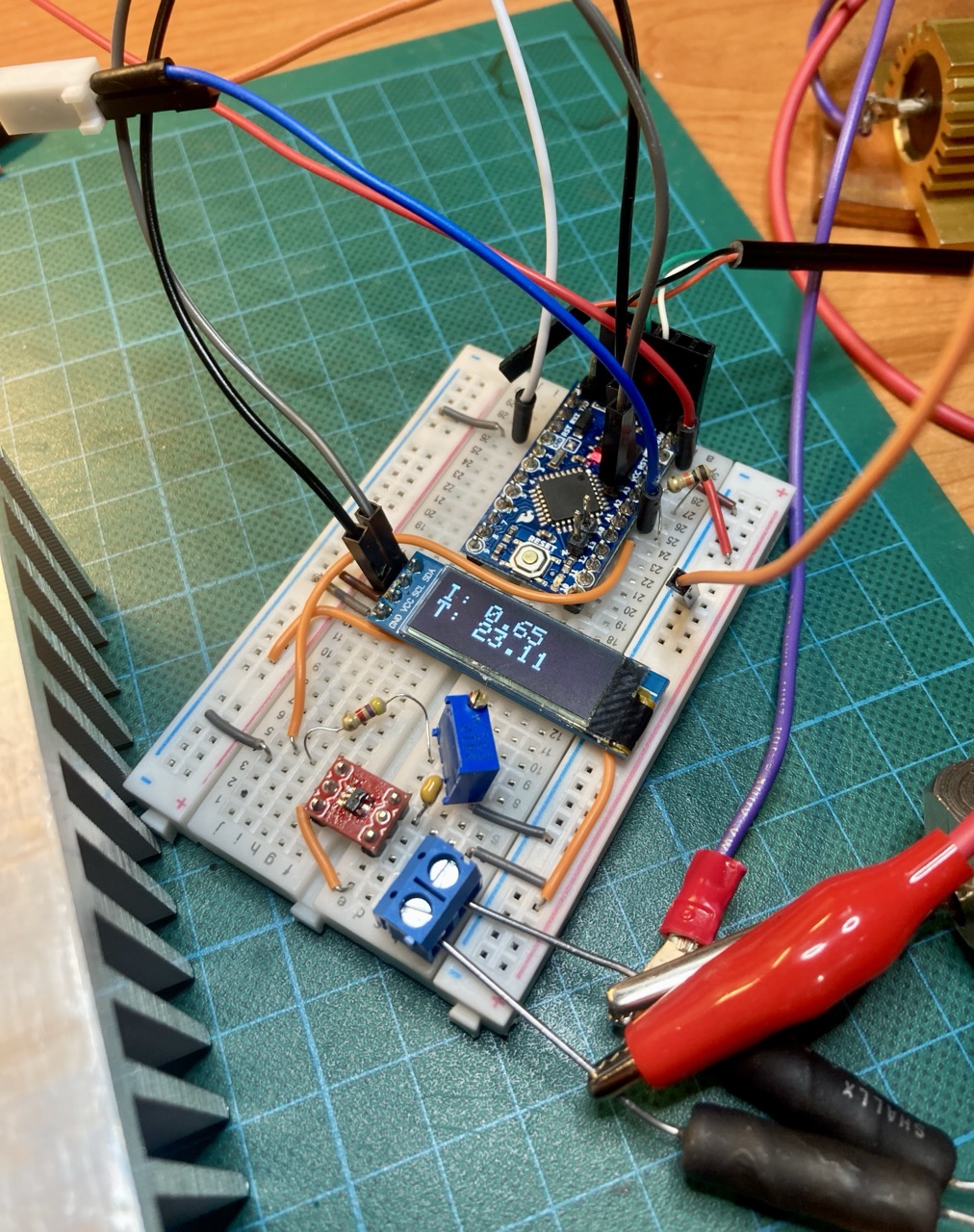Conversation
James Morris
jmorris
Prototyping a monitor circuit for GaN RF power amplifier devices. This is indicating drain current and heat sink temperature, and can be expanded to other measurements as needed. What started as a ‘simple’ project became an entire side quest. This uses an Arduino Pro Mini, an INA169 current sensor, and a thermistor. Could be done more simply with a PIC but this is what I had. The cheap OLED display self destructed not long after this photo, as I fed it 12v instead of Vcc.
Jarkko Sakkinen
jarkko
Edited 1 year ago
@jmorris off-topic but i have this sound card called "RME BabyFace Pro FS". it has pretty cool idea for FPGA's: the mixer is an FPGA. With this topology it can reach 1 ms latency for audio. And i.e. a firmware update contains also potentially update for the FPGA. Pretty clever hybrid approach IMHO.
Before I got this sound card I was not really sure where application wise it would make sense to have e.g. a SoC combined with FPGA but this product made me understand it a bit better.
I also own one small lattice FPGA. As soon as I get an idea how to use it e.g. with RPi for similar hybrid thing I'll definitely will PoC something. Lattice's have the benefit of having open source FPGA stack and since I also have a SoC FPGA does not have to have too many logic ports.
Before I got this sound card I was not really sure where application wise it would make sense to have e.g. a SoC combined with FPGA but this product made me understand it a bit better.
I also own one small lattice FPGA. As soon as I get an idea how to use it e.g. with RPi for similar hybrid thing I'll definitely will PoC something. Lattice's have the benefit of having open source FPGA stack and since I also have a SoC FPGA does not have to have too many logic ports.
James Morris
jmorris
@jarkko I’ve never played with FPGAs, need to fix that at some point. This is possibly very relevant to RF digital, lots of amateurs now using s/w modems via usb sound, but performance is not optimal at high bandwidths. They will struggle to utilise the full potential of the recent FCC changes in the US to increase the data rates allowed on HF.
